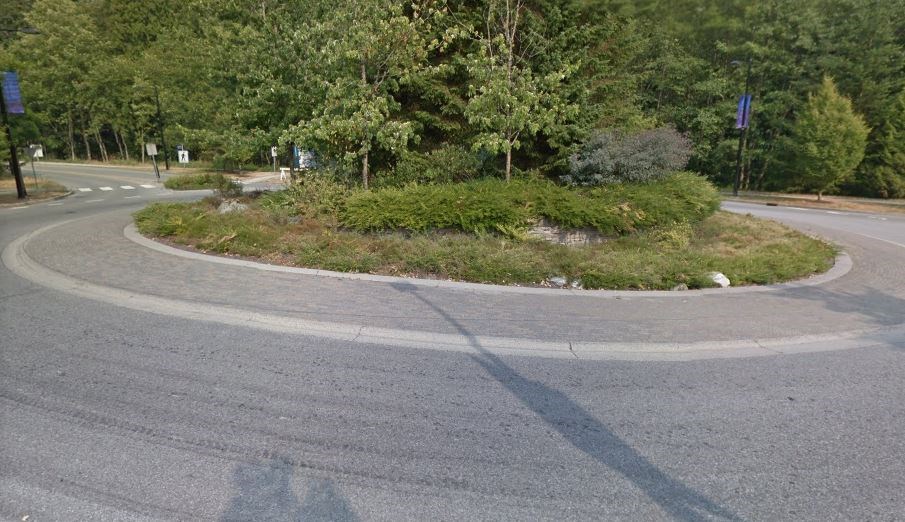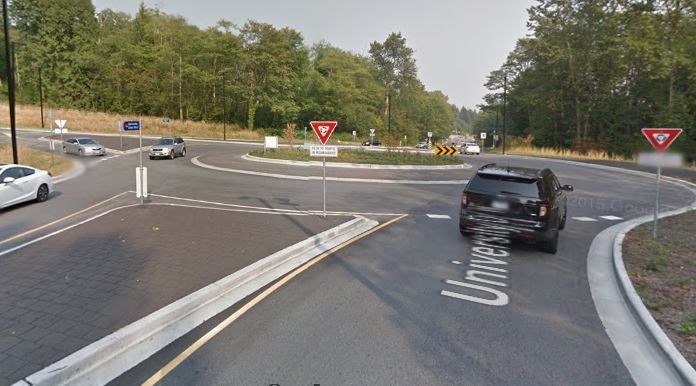Jeff May likes to travel.
And it’s not just to see ancient architecture or theme parks.
What May, a Burnaby resident, pays attention to during his extensive travels, especially through Europe, is how cities manage traffic using infrastructure.
In cities like Burnaby, the reliance is on stop signs, ranging from two- to three- to four-way stops.
By contrast, many European cities take advantage of roundabouts – what he views is a more effective form of traffic management because vehicles – mostly - keep moving.
“I think it is such an obvious next step in our transportation infrastructure plan, but I don't see any significant movement,” May says.
May is such a supporter that he’s written to the city about adding more roundabouts in the future – a mighty endeavour considering the cost involved in changing existing intersections.

The north end of Duthie Avenue has a roundabout that manages six different streams of traffic.
There are also two roundabouts on Burnaby Mountain, one at Gaglardi Way and University Drive West, and another at University Drive East and University High Street.
“I am troubled by the lack of focus our city has on safety at two-, three-, and four-way stops,” May said. “Prime examples of intersections that would immediately benefit are at the three-way corner of Forest Grove/Broadway/Production Way and the three-way corner of Forest Grove/Underhill.”
According to a report by the Washington State Department of Transportation, “studies have shown that roundabouts are safer than traditional stop sign or signal-controlled intersections.”
Roundabouts reduced injury crashes by 75 per cent at intersections where stop signs or signals were previously used for traffic control, according to a study by the Insurance Institute for Highway Safety.
There are several reasons why roundabouts help reduce the likelihood and severity of collisions, says the WSDOT report:
- Low travel speeds – Drivers must slow down and yield to traffic before entering a roundabout. Speeds in the roundabout are typically between 15 and 20 miles per hour. The few collisions that occur in roundabouts are typically minor and cause few injuries since they occur at such low speeds.
- No light to beat – Roundabouts are designed to promote a continuous, circular flow of traffic. Drivers need only yield to traffic before entering a roundabout; if there is no traffic in the roundabout, drivers are not required to stop. Because traffic is constantly flowing through the intersection, drivers don't have the incentive to speed up to try and "beat the light," like they might at a traditional intersection.
- One-way travel – Roads entering a roundabout are gently curved to direct drivers into the intersection and help them travel counter-clockwise around the roundabout. The curved roads and one-way travel around the roundabout eliminate the possibility for T-bone and head-on collisions.



